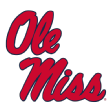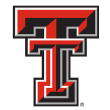The knock on Chris Rumph II has always been his size. He's slim for an edge rusher. That's what kept him out of the spotlight on the recruiting trail, and it has meant Duke has been a bit outside the box with his use on the defensive line the past few years. So it's no surprise Rumph's goal for the offseason was to bulk up and get stronger.
Small problem: The coronavirus pandemic ended on-campus workouts, nixed spring practice and forced Rumph to get creative with his strength training.
"Herschel Walker didn't have a whole weight room," Rumph said in May, "but he did pushups and situps like a madman, so that's what I'm doing."
The routine is simple. Rumph gets up, does 20 or so pushups, then goes on about his day, dropping every so often to do 20 more. How many does that end up being by the end of the day?
"Honestly, I've lost count," he said.
That's not to say he isn't counting. His position coach, Ben Albert, is trying to get in shape this offseason, too. He had knee and back surgery the past few years, so he's finally feeling good enough to get out and exercise, but by the time he gets out of bed and flicks through his phone messages, there's certain to be a note from Rumph and linemate Drew Jordan already waiting in his inbox with workout stats for the morning.
"They're challenging me," Albert said. "It'll be like, 'Where you at, old man?'"
Sure, it's been an unconventional offseason, but it's also a crucial one for Duke's defensive line, and Rumph in particular.
Rumph's numbers last season are eye-popping. Despite limited playing time, Rumph racked up 6.5 sacks and 13.5 tackles for loss to go with 11 quarterback hurries, three pass breakups and a forced fumble. He pressured the QB on a whopping 22.1% of his pass rushes, the second-highest mark in the country, well ahead of Ohio State's Chase Young. His run stuff rate of 6.2% put him among the top 15 in the country, and he had just four missed tackles on the season. Overall, he had 24 tackles at or behind the line of scrimmage, all while being on the field for less than half of Duke's defensive snaps. Pro Football Focus graded him as the ACC's best returning edge rusher.
"We wanted to put him in situations where we thought he could have success," said Albert, the Blue Devils' co-defensive coordinator who developed a scheme to put Rumph and fellow ends Jordan and Victor Dimukeje on the field at the same time. "The playing time was a byproduct of us trying to find the right fit where he could excel and do the type of things that he'd be really good at."
Which still gets back to the primary concern, Rumph's size.
Rumph's father, Chris Jr., starred at South Carolina and now coaches outside linebackers for the NFL's Houston Texans, but the son didn't take up the sport until his junior year in high school. Before that, he was a baseball star.
"We've only got Chris Rumph because he couldn't handle the curveball," Albert said jokingly.
The late start meant few options on the recruiting trail, and at just 195 pounds, even Duke -- a staunchly developmental program -- was concerned. Those concerns vanished within the first three plays when Albert showed up to see Rumph play in his school's spring scrimmage.
"On the first play, they ran right at him, and he had a TFL," Albert recalled. "The second, he tipped a pass. The third, he got a sack. He showed he had the ability to play physical."
Since arriving at Duke, Rumph has added more than 30 pounds, but at 6-foot-3, 225 pounds, he's still undersized for the average edge rusher. He allowed 3.1 yards per tackle on first down last season, which ranked him 203rd among linemen and linebackers with at least 20 attempts. That has translated to more of a specialty role alongside Jordan and Dimukeje, which has provided the Blue Devils with an often-dominant defensive front.
Still, Rumph has bigger goals for 2020. He has always been fast, but adding the power to his game could turn him into a potential first-round pick, a playmaking force up front.
The goal, Rumph said, is for Duke's defense to rack up 40 sacks this season. He's already planning on contributing at least half that total.
That type of performance would certainly put Rumph among the elite pass-rushers in college football, but Albert thinks there's still much room for growth. He wants to line up Rumph inside, put him on the tight end in the 6-technique, have him play with his hand in the dirt. If Rumph keeps developing this way, there's genuinely no limit to what he can be, Albert said.
"He has innate speed, uses his hands very well, and he's a lot stronger than you think," Albert said. "I have no reservations about Chris being able to play at the next level and do so very well."
If Rumph gets his 20 sacks this season, he'll be a household name. But he's not alone on the precipice of something special. Here's a rundown of some other breakout candidates around the country.

RB Jerrion Ealy, Ole Miss Rebels
Stat to know: No SEC running back averaged more yards per carry than Ealy's 6.94 last season.
Comparison point: Ealy had just 12 carries in his first three games vs. FBS opponents, but from Week 5 on, he averaged 7.14 yards per rush, better than Travis Etienne's 6.94. Meanwhile, for the season, Clemson's Etienne was the only back in the country to average more yards after contact per carry than Ealy.
Why he's poised for a breakthrough: There's a general assumption that tailback is the easiest spot for a freshman to step in and make an immediate impact, but the truth is a bit more complicated. Ealy's transition to college showed some early flashes, but it wasn't an instant success story.
"I got more knowledge of the game, and I learned a lot more about angles and which angles are going to attack the defense," Ealy said. "Once I got the right angle, then it was just trusting my speed, and as I started doing that, the speed of the game started to slow down a lot."
Still, it wasn't until Ole Miss made a change at quarterback -- going from pocket passer Matt Corral to more mobile John Rhys Plumlee -- that Ealy really took off.
Five of Ealy's six touchdowns came with Plumlee at QB, and his per-carry average jumped from 5.7 with Corral at under center to 7.4 when Plumlee was in the backfield.
"Playing with John Rhys most definitely helped me, because the defense not only had to account for me but they had to take him into account as well," Ealy said. "Since the ball is always in his hands, eyes were basically all on him. Then they had to choose between who they were going to tackle first."
As both players enter their sophomore seasons with a new offensive-minded head coach in Lane Kiffin at the helm, defenses aren't going to have an easier time making that call, and Ealy's numbers with a full load of carries could easily put him among the nation's best backs.

CB Olaijah Griffin, USC Trojans
Stat to know: Griffin allowed just 4.5 yards per target last season (tops among Pac-12 defensive backs) and 38.6% completions (second).
Comparison point: Former Utah DB Jaylon Johnson was an All-Pac-12 performer last season and ended up being selected in the second round of the NFL draft, but Griffin posted a lower completion percentage, fewer yards per target and a higher rate of pass breakups per target for the season.
Why he's poised for a breakthrough: We're trained to grade defensive backs on one big number: interceptions. That number wasn't particularly kind to Griffin last season. Griffin broke up nine passes as a sophomore, but he didn't pick off a single one.
"I was really upset about that, but I was just trying to handle my job," Griffin said. "But I'm coming for interceptions this year. I'm really working for it. Making plays is something I really love to do."
Of course, there is more to a lockdown corner than ample takeaways. Opponents posted a 31.9 QBR, which ranked third in the Pac-12 among corners. Quarterbacks tried to test him with the deep ball often -- his average target distance was 18 yards downfield -- but he allowed just three completions of 20 yards or more, and just a single touchdown. He was targeted 13 times on third and fourth downs, and just three of those attempts went for a first down. If Griffin keeps up those numbers, the INTs will come.
"[This] year is going to get even better," Griffin said. "It was like that in high school, too -- starting off getting the feel of it, and now is when I get into my groove and start making plays."

RB Tyler Goodson, Iowa Hawkeyes
Stat to know: Only four running backs with 100 or more rushes had a higher percentage stopped at or behind the line of scrimmage than Goodson's 26.1%. When Goodson crossed the line, however, he averaged 7 yards per carry.
Comparison point: Goodson racked up an impressive 25 evaded tackles on just 134 carries last season, just a tick behind first-round pick Clyde Edwards-Helaire of LSU.
Why he's poised for a breakthrough: Goodson's speed is his best asset, and the number of evaded tackles showcases how dangerous he can be with the ball in his hands. As Iowa coach Kirk Ferentz saw it, however, that speed also worked against Goodson at times.
"There are things he can improve -- getting bigger, stronger and having more expertise," Ferentz said. "The biggest thing is just to go out and play and not try to hit a home run every time. If he can get the spark plays on top of consistency, that's a big thing for a team."
Indeed, Goodson's high rate of stuffed runs signals a bit of impatience (not to mention some shaky offensive-line play), but if he improves as Ferentz believes he will in 2020, there's a high ceiling for the sophomore runner.
Perhaps the biggest highlight on Goodson's résumé, however, was his production against top-tier defenses. While Goodson had his ups and downs throughout 2019, against top-50 defenses, he was terrific, averaging 6.1 yards per carry (10th among FBS RBs) with nearly half his carries going for 5 yards or more.

WR Erik Ezukanma, Texas Tech Red Raiders
Stat to know: Ezukanma had at least 60 yards receiving in seven of his final eight games in 2019, and 89% of his 19 receptions in the month of November went for a first down or touchdown.
Comparison point: While Georgia's George Pickens seems to be the breakout sophomore receiver everyone's most excited about, take a look at how their numbers stacked up down the stretch last season. In his final eight games, Ezukanma had 34 catches for 589 yards, caught 67% of his targets and racked up 192 yards after the catch. Pickens had 30 catches for 444 yards, a 65% catch rate and 155 yards after the catch.
Why he's poised for a breakthrough: At 6-3, 210 pounds, Ezukanma is an inviting target. A four-star prospect coming out of high school, he redshirted in 2018 and got off to a shaky start last season before finally tapping into his potential.
At the end of September last season, Ezukanma had just eight catches for 75 yards, and coach Matt Wells pulled him aside with a plan. He'd start swapping possessions with senior R.J. Turner, and when Ezukanma was on the sideline, he needed to be learning, dissecting everything the veteran was doing.
The plan worked perfectly.
"When receivers went down, my role got bigger and I gained confidence," Ezukanma said. "I feel like that helped me a lot."
Ezukanma racked up 92 yards and a score against Oklahoma State, posted a career-high seven grabs against Iowa State, then capped the season by scoring in each of his final three games, including a 135-yard outburst in the finale against Texas.
Before the coronavirus pandemic shut down on-campus activities, Ezukanma said he'd already taken a huge step in the spring and was "one of the best players on the team." He spent the months away from campus finding parks and fields near his home where he could run drills. He enters 2020 with a different level of confidence and a different understanding of what his role should be, he said.
"Now that the culture's changed, I understand what they're building here, and with that you gain trust in the process and the playbook," Ezukanma said, "and you're more focused on what you need to do."

QB Holton Ahlers, East Carolina Pirates
Stat to know: When outside the pocket in 2019, Ahlers completed 66% of this throws with seven touchdowns and one interception, averaging 9.53 yards per attempt, while his 85.4 QBR was top 10 in the country.
Comparison point: From Oct. 1 through the end of last season, Ahlers matched Minnesota star QB Tanner Morgan in total TDs (20), had nearly 500 more yards despite playing 50 fewer snaps, completed the same percentage of passes and had two fewer turnovers.
Why he's poised for a breakthrough: Ahlers grew up a lifelong ECU fan from Greenville, North Carolina. On the recruiting trail, he was a prized prospect, and the Pirates were in miserable shape. Oddly, that was the perfect selling point.
"I wanted to bring ECU back to where it was when I was growing up," Ahlers said. "To see where the program was at when I was getting recruited was unfortunate and I wanted to be the guy that changed that. I came here to be a four-year starter and leave this place totally different than the way we found it. This is the tipping point of the real ECU football being back."
It's not misplaced optimism. Yes, East Carolina dropped six of its final seven games in 2019 and missed a bowl game for the fifth consecutive season. But in Mike Houston's first year as coach, there were ample silver linings, and perhaps none was brighter than the progress of Ahlers and the offense.
During that final seven-game stretch, Ahlers threw for more than 300 yards and was responsible for multiple touchdowns six times. He was one of just seven FBS quarterbacks to account for 20 TDs, pass for 2,000 yards, complete 62% of his throws and average at least 8.3 yards per attempt from Oct. 1 on. That's a list that also included Joe Burrow, Jalen Hurts, Trevor Lawrence, Justin Fields and Kedon Slovis.
The key, Ahlers said, was simply comfort. The entire offense was young, and the coaching staff was new. It took a while to understand what worked best and scrap the parts of the playbook that didn't fit. Getting Ahlers outside the pocket and letting him use his athleticism was another turning point. He blossomed into one of the best passers on the move in the country.
Entering 2020, the blueprint is already in place, and that has Ahlers and the Pirates on the brink of something special.
"Toward the end of the year, not only me, but the whole offense played really well," the junior said. "We learned on the fly. We figured out what we liked and it all started clicking there at the end."
